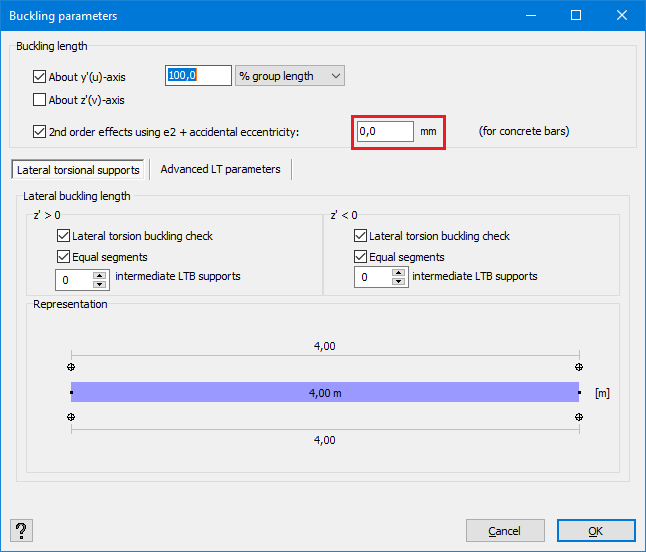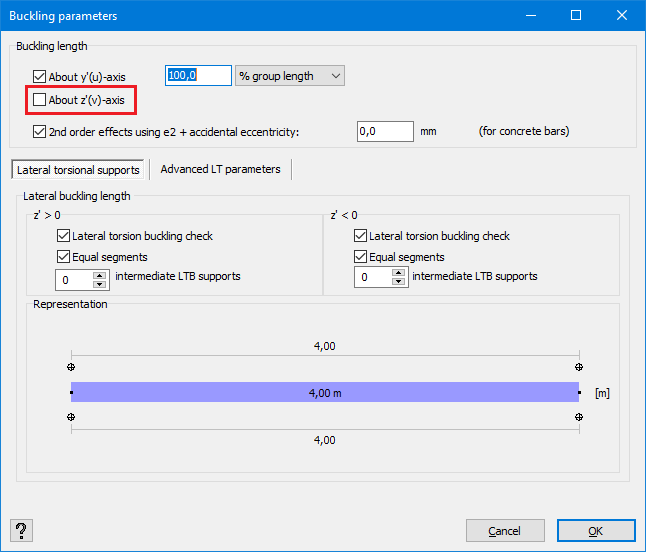Description

| Geometry | Cross-section: | |
|---|---|---|
| Column height: | ||
| Material: | C25/30 | |
| Concrete cover: | ||
| Creep factor |
2 | |
| Reinforcement distribution: | Identical Only upper and lower |
|
| Load | Design forces: | |
| Standard | EN 1992-1-1 [- -] |
Independent reference results
Diamonds results and comparison

Longitudonal reinforcement calculated by Diamonds (EN 1992-1-1 [- -])
The reinforcement due to ULS is shown using a thin line, the reinforcement due to ULS + SLS + buckling with a thick line. Because the SLS verification were turned off, the thick line represents the reinforcement for ULS + buckling.
| Results | Independent reference | Diamonds | Difference |
|---|---|---|---|
| Longitudonal reinforcement | 593mm² | 593mm² | 0% |
References
- EN 1992-1-1: 2005 + AC: 2010
- Van Hooymissen, L., Spegelaere, M., Van Gysel, A., & De Vylder, W. (2002). Gewapend beton. Academia Press
Keep in mind that the calculations in this book are made done using the NBN B15-002/ ENV 1992-1. Both old standards. However, this book still remains a good reference if you want to understand how reinforcement calculations work. - Gruyaert, E., & Minne, P. (2019). Gewapend beton: numeri.
This reference is a summary of Gewapend beton (2002) but with updated formula and principles according to EN 1992-1-1. This document contains multiple graphs and tables helping the design of reinforced concrete.
- Tested in Diamonds 2024r01.








